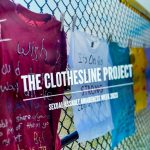Victims of anti-wire-headphones hate rise up: In the coming months, your lack of AirPods could make you incredibly fashionable and undeniably camp. Why is that? The ever-accelerating trend cycle has spoken, and outdated accessories — I think AirPod memes have haunted us long enough for me to call wire-headphones outdated — will play an important role in the next new fashion movement.
What I’m referring to is the comeback of indie sleaze. Indie sleaze is a specific aesthetic from the 2000s and early 2010s that revolves around flash photography of people who look vaguely like they’re in need of a shower, excessive displays of clubbing and tastefully smudged mascara.

In essence, the indie sleaze aesthetic is an artfully hedonistic mashup of clothes, music and accessories from the 2000s aimed at producing a vision of “carefree maximalism.” Don’t let the three-plus syllable words fool you into thinking this is some kind of classy Coco Chanel fashion moment, however. Whether through its obsession with partying or use of provocative advertising, the indie sleaze aesthetic glorifies trashiness in a way TLC couldn’t hope to compete with.
For those of us who watched the British TV show Skins in middle school, in addition to developing a wildly inaccurate perception of high school— I really thought it was normal for high schoolers to smoke joints in the school bathroom— we also fell in love with indie sleaze’s poster child, main character Effy Stonem. Everything from her ripped tights and cigarette smoking to her wild partying adventures exemplifies the apathetic, artistically sleazy tenets of the subculture.
No discussion of the era is complete without a mention of American Apparel, either. Perhaps most demonstrative of indie sleaze’s thirst for the trashy is American Apparel’s popularity during the era, and the provocative advertisements company founder Dov Charney put out in the late 2000s.
The advertisements, though aggressively suggestive, portray a kind of easy sex appeal and appreciation for the tacky that exemplifies indie sleaze. And though today looking at the advertisements makes me want to douse my eyes in holy water rather than buy any of the products, the hold American Apparel had on 2010 “hipsters” is undeniable.
So what’s responsible for the return of indie sleaze in all its garish debauchery?
In a TikTok trend forecaster Mandy Lee — whose username is @oldloserinbrooklyn on TikTok — explains that we are seeing its reemergence through phone cases that mimic flip phones, mirroring the 2010’s obsession with similar “archaic” objects such as polaroids and typewriters and music mashups that harken back to mixes from the 2010s.
Megan Fox has also embraced indie sleaze through a seemingly distressing lack of self-awareness. Her recent Instagram caption, a long absurd poem about her and Machine Gun Kelly’s “solar flare of a romance” reads straight out of a 2010 Tumblr post.
If that wasn’t enough, in the United Kingdom, the government has plans to print “smoking kills” on individual cigarettes. The fake-deep irony of it all is exactly what indie sleaze era Tumblr was all about.
In many ways, the return of indie sleaze makes a lot of sense. After the pandemic’s endless months of sweatpants, whipped coffee and crushing existential angst, who wouldn’t want to go clubbing excessively and celebrate the night’s chaos with amateur flash pictures? The aesthetic’s acceptance of the garish and its encouragement of excess feels refreshing — like a welcome, if a bit tacky, distraction from the world’s problems.
Moreover, indie sleaze may appeal to a wider variety of people due to its financial accessibility. indie sleaze occurred after the 2008 financial recession. Some have attributed the return of the signature indie sleaze grown-out roots look due to the fact that many people simply can’t afford to maintain their blond hair anymore.
It’s also important to remember, however, that this hyper-sexualized live-in-the-moment fashion era had problematic aspects to it.
First off, this was the era that saw glitter-crusted lips, galaxy leggings and mustaches on literally everything. I shudder to think that these fashion atrocities could re-enter our world today.
On a more serious note, the hyper-sexualization of indie sleaze also came along with many cases of sexual misconduct. For example, in 2014, the aforementioned Don Charvey— that’s right, the one that came up with those weird ads — faced multiple sexual assault allegations and stepped down as CEO of American Apparel.
The aesthetic also romanticized drug use and excessive partying. In the case of the show Skins, which exemplified indie sleaze, many of the underage characters abused drugs and struggled with serious mental health issues and eating disorders. The show has since received criticism for its normalization and even romanticization of these heavy themes, which had a dangerous potential to lead many teens to attempt to emulate the characters’ behavior.
Finally, the complete disregard for propriety which makes indie sleaze so appealing also has negative consequences such as unabashed cultural appropriation. The era saw people un-ironically wearing “Aztec” prints and “Arab” scarves.
In my opinion, indie sleaze provides fashion with much-needed spontaneity and maximalism, even if that means subjecting ourselves to shutter shades. I just hope that in our 2021 take on the aesthetic, we can leave behind its dangerous aspects and not take its charming shortsightedness too seriously.




